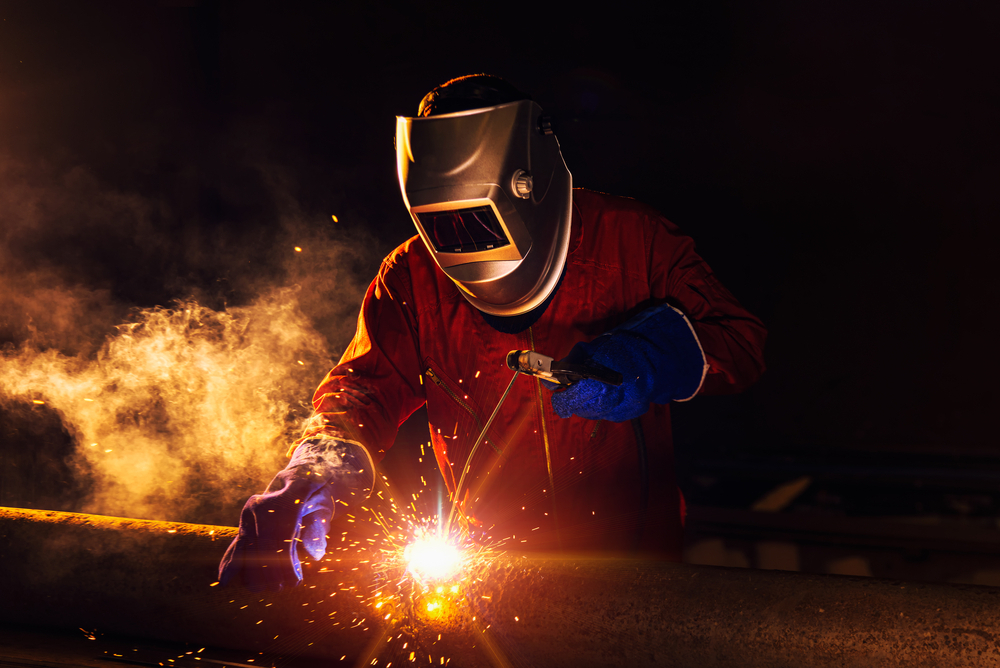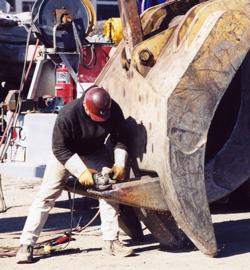Common Welding Repair Issues and Exactly How to Address Them Properly
Welding repairs frequently experience a variety of problems that can jeopardize the stability of the last item. Usual problems include poor penetration, porosity, and imbalance, among others. Each flaw presents unique difficulties that require certain strategies for resolution. Understanding these concerns is crucial for welders intending to improve their end results and abilities. This conversation will certainly explore these common welding fixing concerns and reliable approaches to address them.
Inadequate Penetration
Insufficient infiltration happens when the weld steel falls short to fully fuse with the base material, causing weak joints and prospective structural failures. This issue frequently stems from insufficient heat input, incorrect electrode angle, or improper welding rate. Welders may run into inadequate penetration as a result of a mistake of the necessary criteria for a particular material thickness or type. In addition, contamination on the base product's surface can prevent effective bonding, aggravating the trouble. To attend to poor penetration, welders need to assure proper settings on their equipment and maintain a clean work surface area. Regular inspection of welds is advised to determine any type of deficiencies early, permitting timely corrections and the prevention of endangered structural integrity in bonded settings up.
Porosity
Porosity is a common issue in welded joints that manifests as tiny gas bubbles entraped within the weld steel. This flaw can endanger the stability of the weld, resulting in reduced toughness and prospective failing under stress and anxiety. Montana Mobile Welding and Repair Belgrade Fabrication. Porosity normally develops from contamination, dampness, or incorrect welding strategies, which enable gases to escape into the liquified weld swimming pool. To deal with porosity, welders ought to guarantee proper surface area prep work, preserve a clean workplace, and use ideal welding criteria. Additionally, selecting the right filler product and protecting gas can reduce gas entrapment. Routine evaluation and screening of welds can help identify porosity early, ensuring timely restorative activities are taken, thus preserving the high quality and reliability of the welded structure
Misalignment
Misalignment in welding can occur from different variables, including improper setup and thermal expansion. Comprehending the source is crucial for effective resolution. A number of improvement methods are offered to realign elements and ensure structural honesty.
Reasons for Misalignment
Welding imbalance usually originates from a selection of underlying problems that can compromise structural stability. One key cause is inappropriate fit-up of components prior to welding, which can bring about voids and uneven surface areas. Variations in thermal growth throughout the welding procedure can likewise cause distortion, especially if the products being signed up with have various coefficients of development. Furthermore, inadequate fixturing and securing might fall short to hold elements securely in position, leading to activity during welding. Inadequately kept devices, consisting of welding makers and tools, may present inconsistencies in the weld bead, additional adding to misalignment. Driver error, stemming from insufficient training or experience, can likewise play a considerable function in producing misaligned welds.

Correction Techniques Readily Available
Resolving imbalance efficiently needs a combination of corrective techniques customized to the specific issues at hand. One typical technique is making use of fixtures or jigs to hold parts in the right placement throughout welding, guaranteeing consistent placement. In addition, preheating the materials can help in reducing distortion and boost fit-up. For substantial misalignment, mechanical realignment techniques, such as using hydraulic jacks or clamps, can be utilized to correct the setting before welding. Post-weld warmth treatment might additionally be necessary to alleviate anxieties caused by misalignment. Finally, cautious inspection and adjustment throughout the setup phase can protect against imbalance issues from becoming considerable problems, promoting a smoother welding process and enhancing general architectural integrity.
Distortion
Distortion is a common obstacle in welding that can develop from various variables, consisting of unequal heating and air conditioning. Comprehending the reasons for distortion is essential for carrying out efficient avoidance strategies. Resolving this problem not just enhances structural stability yet likewise boosts the general top quality of the weld.
Root causes of Distortion
When based on the intense heat of welding, products often undertake changes that can lead to distortion. This sensation mostly emerges from thermal growth and tightening throughout the welding procedure. As the weld area warms up, the material increases; upon cooling, it acquires, which can create inner stresses. In enhancement, unequal home heating across a work surface can intensify these anxieties, resulting in warping or bending. The kind of material likewise plays a you can find out more substantial duty; metals with varying thermal conductivity and coefficients of expansion may react differently, bring about unpredictable distortions. Furthermore, inadequate joint style and poor fixturing can contribute to imbalance throughout welding, raising the chance of distortion. Understanding these causes is essential for effective welding repair and prevention approaches.
Prevention Techniques
Efficient prevention strategies for distortion throughout welding concentrate on managing warm input and making certain proper joint style. Keeping a consistent heat input aids to lessen thermal expansion and contraction, which can result in distortion. Using strategies such as preheating the work surface can likewise reduce the temperature slope, promoting uniform heating. In addition, choosing proper joint styles, such as T-joints or lap joints, can enhance security and minimize anxiety focus. Applying appropriate fixturing to safeguard the work surfaces in place further help in keeping alignment during the welding procedure. Finally, staggered welding series can distribute heat much more evenly, stopping localized distortion. By applying these techniques, welders can substantially lower the probability of distortion and improve the general quality of their welds.
Splitting
Splitting is an usual problem come across in welding fixings, frequently resulting from numerous aspects such as incorrect air conditioning rates, material option, or inadequate joint prep work. The incident of cracks can significantly jeopardize the stability of the weld, resulting in prospective failings throughout operation. To address this concern, welders should first examine the origin, ensuring that products are compatible and suitably selected for the certain application. In addition, controlling the cooling rate throughout the welding process is vital; rapid air conditioning can induce stress and lead to fracturing. Correct joint style and preparation also add to lessening the risk. Carrying out these strategies can enhance weld top quality and sturdiness, inevitably decreasing the probability of breaking in finished weldments.
Incomplete Combination
A significant problem in welding repair work is insufficient fusion, which happens when the weld steel does not effectively bond with the base product or previous weld passes - Belgrade Welding. This problem can lead to weaknesses in the joint, possibly endangering the stability of the bonded structure. Aspects contributing to insufficient combination consist of not enough heat input, incorrect welding technique, and contamination of the surface areas being signed up with. To address this concern efficiently, welders read need to ensure correct pre-weld cleansing and surface preparation, along with readjust their welding parameters to attain sufficient infiltration and blend. Normal inspection during the welding process can also help determine insufficient fusion early, enabling prompt rehabilitative actions to boost the total high quality of the weld
Overheating
While welding repair work can enhance structural stability, overheating presents a considerable difficulty that can cause product deterioration. Extreme heat during welding can alter the mechanical residential properties of metals, leading to lowered stamina, boosted brittleness, and warping. This phenomenon is especially important in high-stress applications where structural reliability is paramount. Identifying getting too hot can include visual assessments for staining or distortion, in addition advanced welding to checking temperature level throughout the welding procedure. To minimize the risks related to overheating, welders should use appropriate strategies, such as managing heat input, changing travel rate, and utilizing ideal filler materials. In addition, executing pre- and post-weld warm therapies can help recover material properties and boost the overall top quality of the repair service, making certain long-term efficiency and safety.
Often Asked Inquiries
What Are the Common Indicators of a Welding Problem?

Just How Can I Check My Welds for Quality?
To examine welds for quality, one can make use of visual examinations, ultrasonic testing, and radiographic methods. Each method ensures structural honesty, identifies defects, and validates adherence to defined requirements, eventually boosting the integrity of the bonded joints.
What Safety and security Precautions Should I Take While Welding?
When welding, one must focus on security by putting on appropriate individual safety tools, ensuring correct air flow, protecting combustible materials away, keeping a tidy work area, and understanding environments to stop injuries and accidents.
Can I Fix a Weld Without Remodeling the Entire Joint?
Fixing a weld without redoing the entire joint is feasible, relying on the damage (Belgrade). Methods such as grinding, adding filler product, or using a welding procedure can successfully attend to specific imperfections while preserving the bordering framework
What Equipment Are Essential for Efficient Welding Repairs?
Crucial devices for reliable welding repair work consist of a welding machine, cable brush, grinder, protective equipment, clamps, and filler products. Each tool plays an essential function in ensuring quality and security during the fixing process. Porosity normally occurs from contamination, wetness, or improper welding techniques, which permit gases to leave into the molten weld pool. Inadequately conserved equipment, including welding equipments and tools, might present variances in the weld grain, additional adding to imbalance. When subjected to the intense heat of welding, products frequently undertake changes that can lead to distortion. Breaking is a common issue experienced in welding repair services, often resulting from different variables such as incorrect cooling rates, product choice, or poor joint prep work. A significant concern in welding repair services is insufficient combination, which takes place when the weld metal does not adequately bond with the base material or previous weld passes.
Comments on “Field-tested steps to avoid porosity in welds with Belgrade Welding”